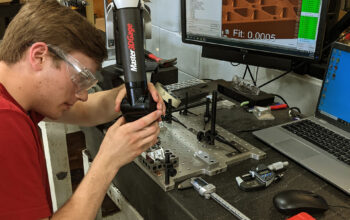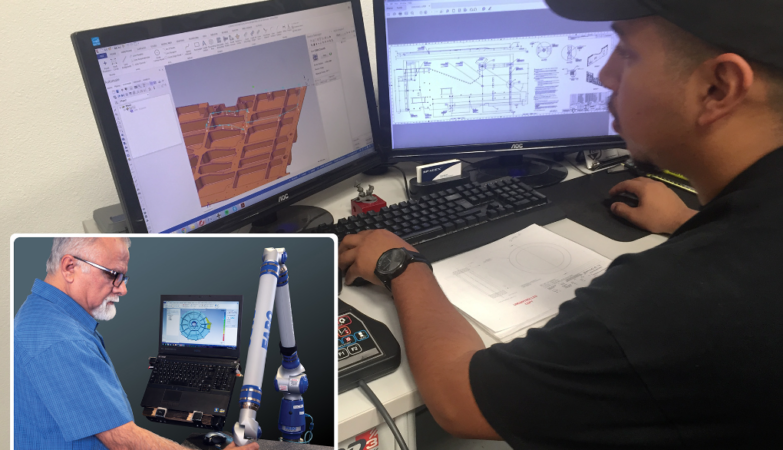The performance of 3D scanners is driven by the ever-increasing demands of the industry, resulting in solutions with increasingly powerful specifications. Among those specifications, resolution plays a significant part in the criteria of choice. Yet this apparently simple concept covers notions not quite so easily grasped.
Resolution defined
Resolution is the smallest distance between two points on a laser line. The resolution specified for a scanner is always measured at the top of the field of view – it is the best theoretical value. During actual scanning, this value is practically never achieved. A scanner’s resolution depends on the resolution of its camera, unless there is interpolation of points (see below).

Finer resolution for more details
Scanner resolution directly impacts the density of the data captured (cloud of points) and hence the detail of the part reproduced. Metrologists look for a high resolution in the following cases:
- Scanning edges of thin parts
- Scanning engravings
- Scanning textures
- Scanning rough surfaces
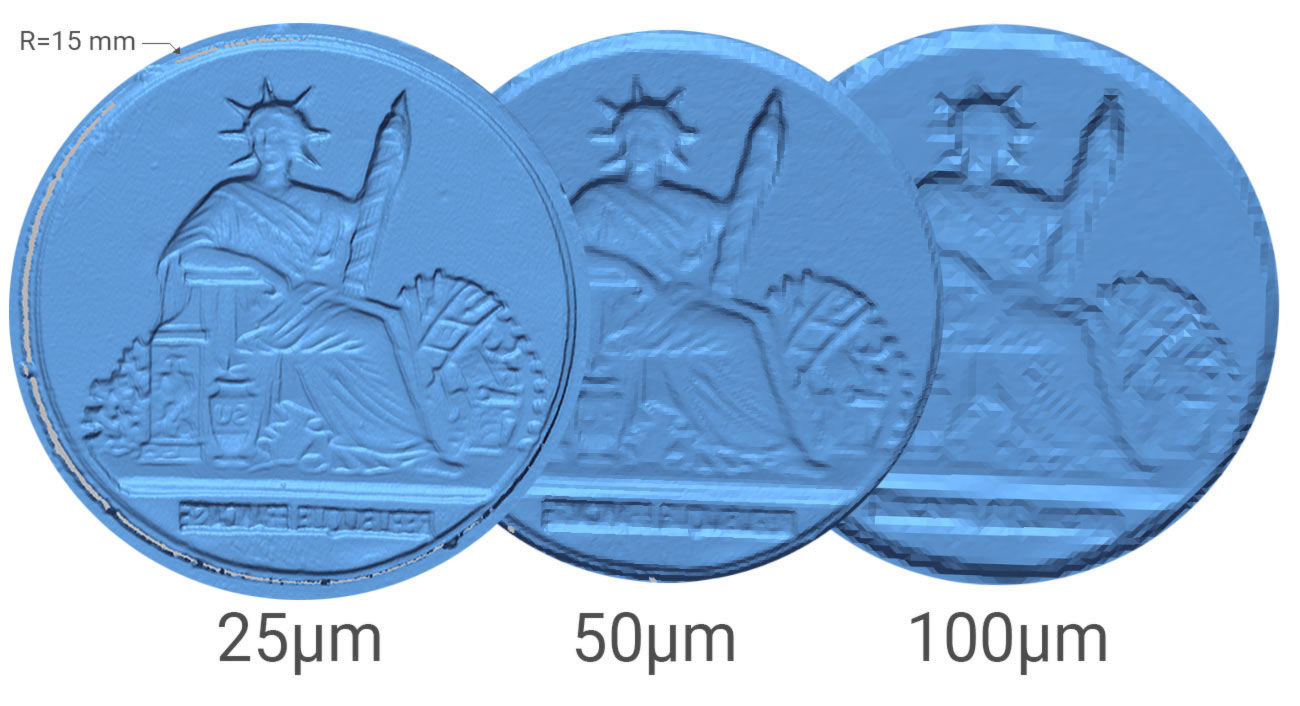
Starting with the launch of the Kreon Zephyr I scanner in 2003,
up to the present with Skyline Eyes,
resolution has quadrupled,
from 100 µm to 25 µm.

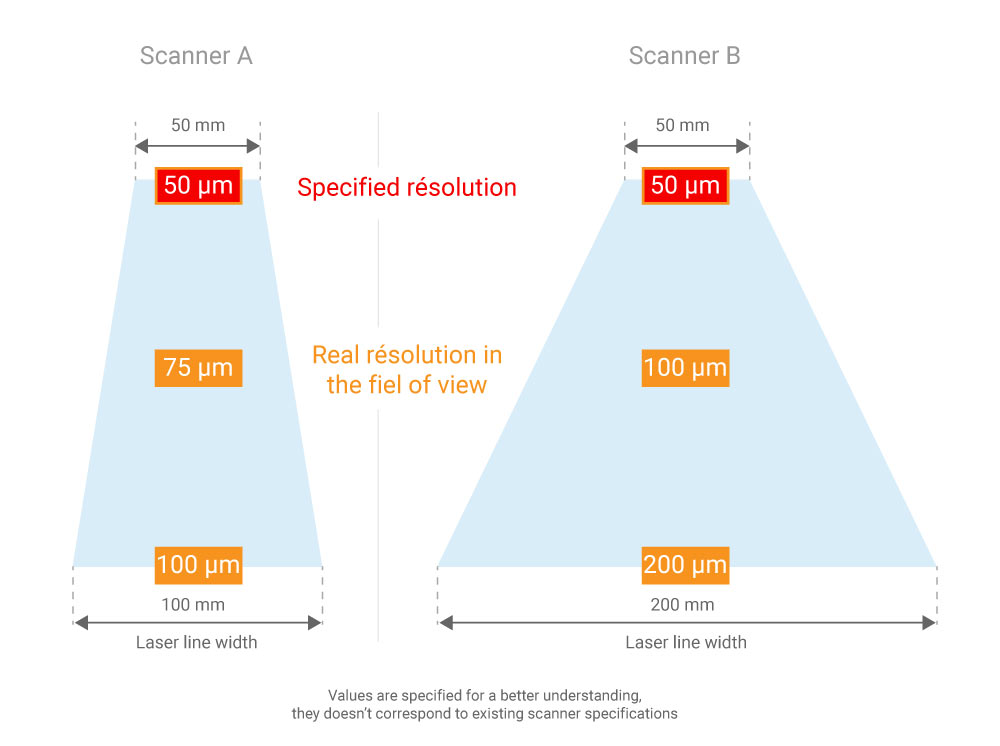
How the shape of the field of view impacts resolution
The shape of the field of view affects resolution (see diagrams). If the field of view is a trapezium with sharply inclined edges, resolution drops very quickly as the scan nears the bottom of the field. Generally speaking, the wider the laser line, the smaller the extent to which the theoretical resolution will be reached.
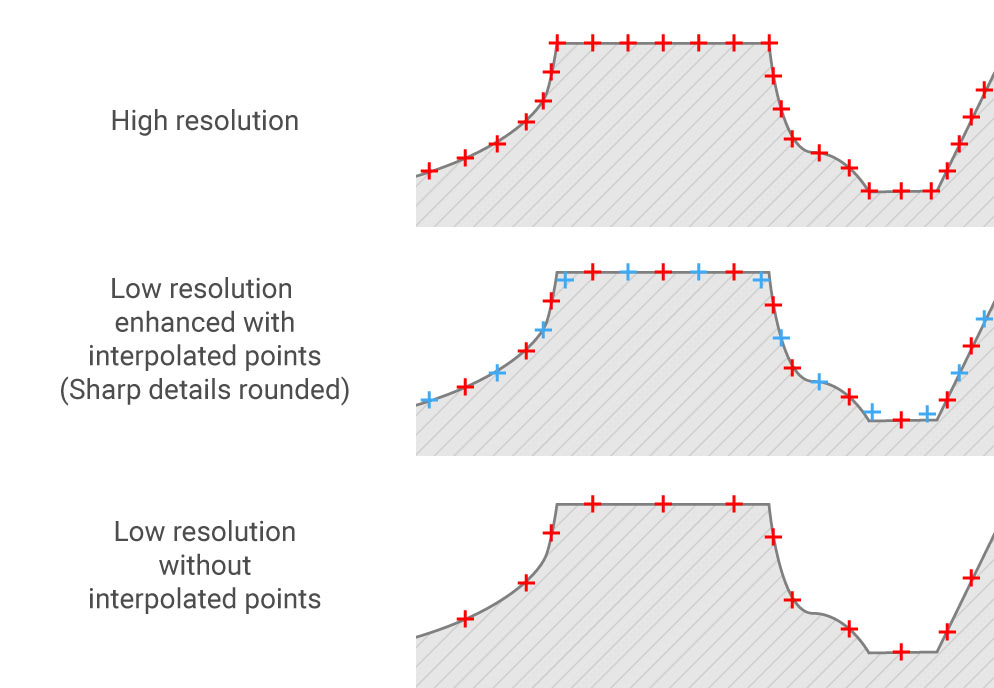
Interpolated points?
Some scanners on the market, of limited camera resolution, compensate this lack by interpolating points. Interpolation means adding one or more calculated points between two points that have actually been scanned. These new virtual points are derived from the neighbouring points on the laser line. Compared to a scan without interpolation, and at equivalent resolution, the details appear more blurred on a scan with interpolated points. Nevertheless, this process enhances the results of scanners fitted with low-resolution cameras.
Not to be confused: resolution and precision
These two parameters do not reflect the same characteristics at all: precision describes the accuracy of points in space, while resolution refers to the density of points along a line. As these two do not correlate, a scanner can have low resolution but high precision, and vice versa.

For More information on Kreon Technologies , please refer https://kreon3d.com
& Indian Reseller Big Zero Technology .




